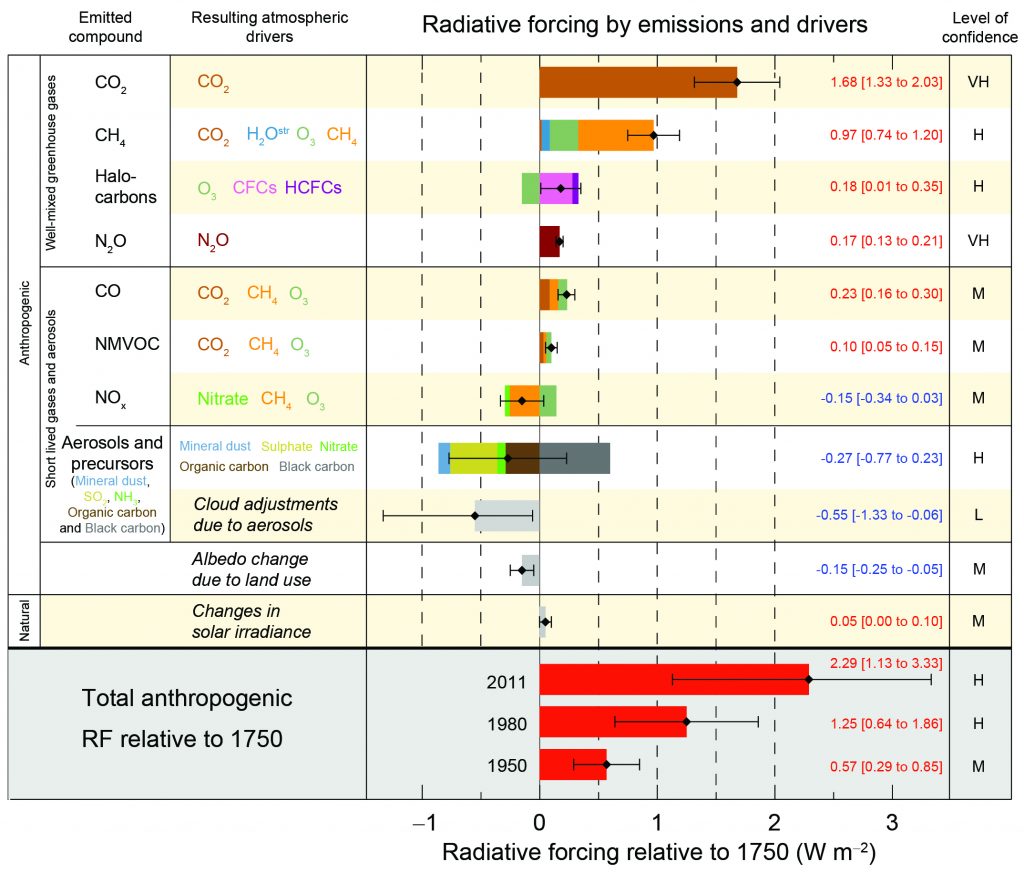
Inadequate Support: The article's claims are not supported by published research. Of the two papers cited in the article, one does not support the article's claim and the other was criticized by scientists for errors in its methods.

RECLAMACION: the IPCC is wrong − the sun, not CO2, drove modern global warming
The article mentions cosmic rays, claiming that changes in cosmic ray nucleation of clouds (via solar magnetic activity) can explain global warming. The effect of cosmic rays has been studied extensively1,2, leading to the conclusion that cosmic rays have not correlated with global cloud cover or temperature. Pierce and Adams conclude that:
«changes in cloud condensation nuclei from changes in cosmic rays during a solar cycle are two orders of magnitude too small to account for the observed changes in cloud properties; consequently, we conclude that the hypothesized effect is too small to play a significant role in current climate change»1,
While Agee et al conclude:
«the observational results presented, showing several years of disconnect between Galactic Cosmic Rays and lower-troposphere global cloudiness, add additional concern to the cosmic ray–cloud connection hypothesis.»
An experiment at CERN that directly tested the ability of cosmic rays to nucleate cloud droplets found that «variations in cosmic ray intensity do not appreciably affect climate through nucleation in the present-day atmosphere.»3
The 2013 IPCC report summarized research on this topic when it stated, «Cosmic rays enhance new particle formation in the free troposphere, but the effect on the concentration of cloud condensation nuclei is too weak to have any detectable climatic influence during a solar cycle or over the last century.»4
The scientists’ comments below explain that besides this cosmic ray hypothesis, the solar radiative forcing fluctuations are also insufficient to explain climate changes over the past decades—in contrast to the radiative forcing due to the increased greenhouse gases released by human activities, which matches the magnitude of the observed warming.
- 1- Pierce and Adams (2009) Can cosmic rays affect cloud condensation nuclei by altering new particle formation rates?, Geophysical Research Letters
- 2- Agee et al (2011) Relationship of Lower-Troposphere Cloud Cover and Cosmic Rays: An Updated Perspective, Journal of Climate
- 3- Dunne et al (2016) Global atmospheric particle formation from CERN CLOUD measurements, Science
- 4- IPCC (2013) Chapter 7, Climate Change 2013: The Physical Science Basis
Patrick Brown, Postdoctoral Research Scientist, Carnegie Institution for Science:
[This comment comes from a previous review of a similar claim.]
Careful analysis that attempts to take into account all major factors and their evolution in time indicates that anthropogenic increases in greenhouse gasses account for more than 100% of the observed warming on the century timescale (requiring cancellation from cooling influences). See the summary graphic from Carbon Brief, below.
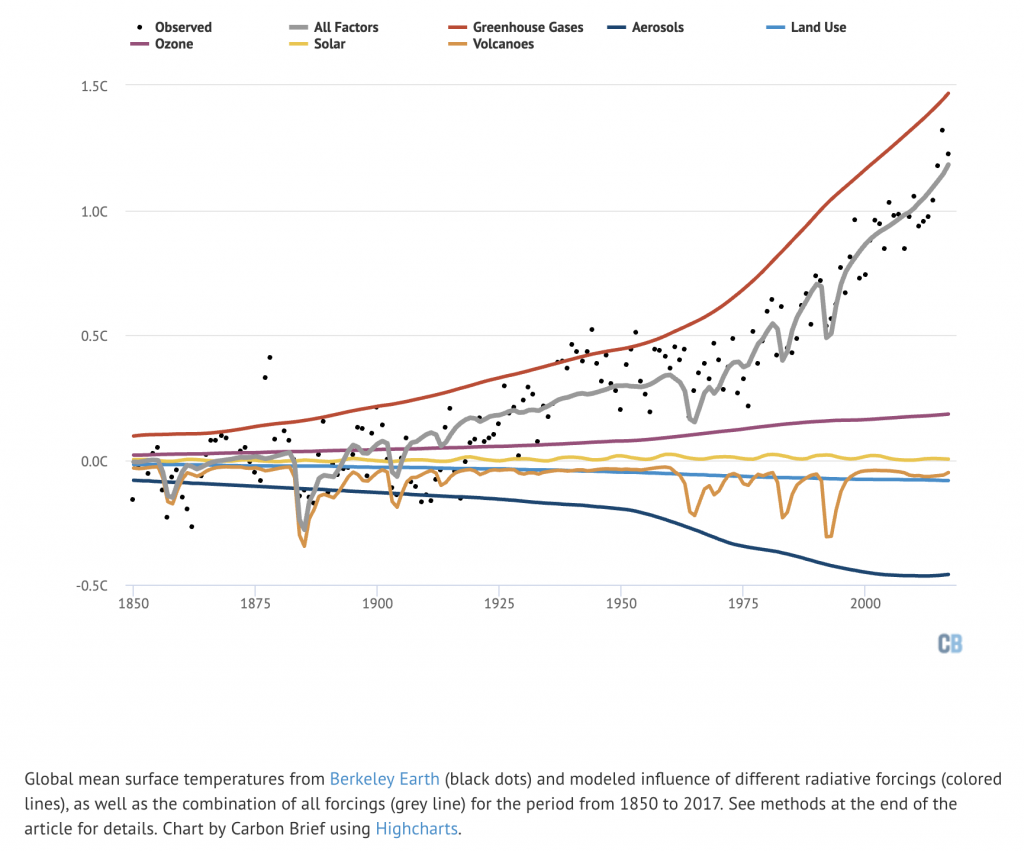
Britta Voss, Postdoctoral Research fellow, U.S. Geological Survey:
[This comment comes from a previous review of a similar claim.]
Solar forcing is much smaller than CO2 forcing. As this figure from the latest IPCC report shows, CO2 radiative forcing (1.68 W/m2) dwarfs solar forcing (0.05 W/m2). Along with other greenhouse gases, CO2 dominates the total radiative forcing when all positive and negative factors are taken into account.
Figure – Radiative forcing estimates in 2011 relative to 1750. Values are global average radiative forcing, partitioned according to the emitted compounds or processes that result in a combination of drivers. Source IPCC AR5
Timothy Osborn, Professor, University of East Anglia, and Director of Research, Climatic Research Unit:
[This comment comes from a previous review of a similar claim.]
There is strong evidence that solar forcing cannot explain much of the observed warming at all. The «fingerprint» of solar forcing does not match the observed changes at all, neither over time nor space. Solar forcing would warm both the stratosphere and the surface of the Earth, whereas CO2 warms the surface (and the troposphere) but cools the stratosphere. Using radiosondes and (more recently) satellites, we have observed a warming surface and troposphere together with a cooling stratosphere. See Santer et al (2013)* for one of many studies providing this evidence.
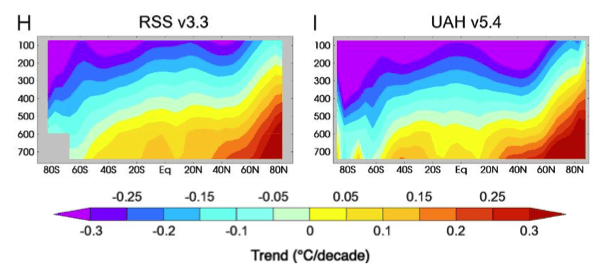 Figure – Zonal-mean atmospheric temperature trends in satellite observations from January 1979 to December 2012 showing warming of the lower atmosphere (troposphere) and cooling of the upper-atmosphere (stratosphere), from Santer et al (2013)*
Figure – Zonal-mean atmospheric temperature trends in satellite observations from January 1979 to December 2012 showing warming of the lower atmosphere (troposphere) and cooling of the upper-atmosphere (stratosphere), from Santer et al (2013)*
- Santer et al (2013) Human and natural influences on the changing thermal structure of the atmosphere, PNAS
Baird Langenbrunner, Postdoctoral scholar, University of California, Irvine:
[This comment is taken from an earlier review of a similar claim.]
First, greenhouse gases are well studied, and their properties are nonnegotiable: They absorb and re-emit longwave radiation, whether they’re in a laboratory setting or in the real atmosphere. To back this up with historical evidence, scientists have known since the 1860s that CO2 is a greenhouse gas and since the 1890s that this will affect the heat budget of the Earth through warming. Even then, these claims were based on empirical evidence, and they’re supported by decades of laboratory research.
Second, the link between increased greenhouse gas concentrations and warming continues to be supported by research in the last two decades. One study from 2001[1] used satellites to measure the type of energy entering and exiting Earth’s atmosphere and concluded that increases in greenhouse gases were responsible for extra heat measured between 1970 and 1997. The authors state that their results “provide direct experimental evidence for a significant increase in the Earth’s greenhouse effect that is consistent with concerns over radiative forcing of climate.” (Here, the term “radiative forcing” refers to the extra energy trapped in the atmosphere by greenhouse gases, cause warming.) A more recent study[2] arrived at similar conclusions, confirming predictions of the greenhouse effect in Earth’s atmosphere and providing “empirical evidence of how rising CO2 levels … are affecting the surface energy balance.” In other words, rising CO2 was linked directly to warming, even when things like plant uptake of CO2 were considered.
- 1 – Harries et al (2001) Increases in greenhouse forcing inferred from the outgoing longwave radiation spectra of the Earth in 1970 and 1997, Nature
- 2 – Feldman et al (2015) Observational determination of surface radiative forcing by CO2 from 2000 to 2010, Nature
Mark Richardson, Postdoctoral scholar, Jet Propulsion Laboratory, California Institute of Technology:
[This comment is taken from an earlier review of a similar claim.]
[These] comments would have been fair in 1896 when Svante Arrhenius calculated that we could cause serious global warming[1]. World temperatures measurements began in the 1800s and show a warming burst since the 1970s. Last year we checked with satellite scans of the ocean[2], confirming the accuracy of the surface measurements.
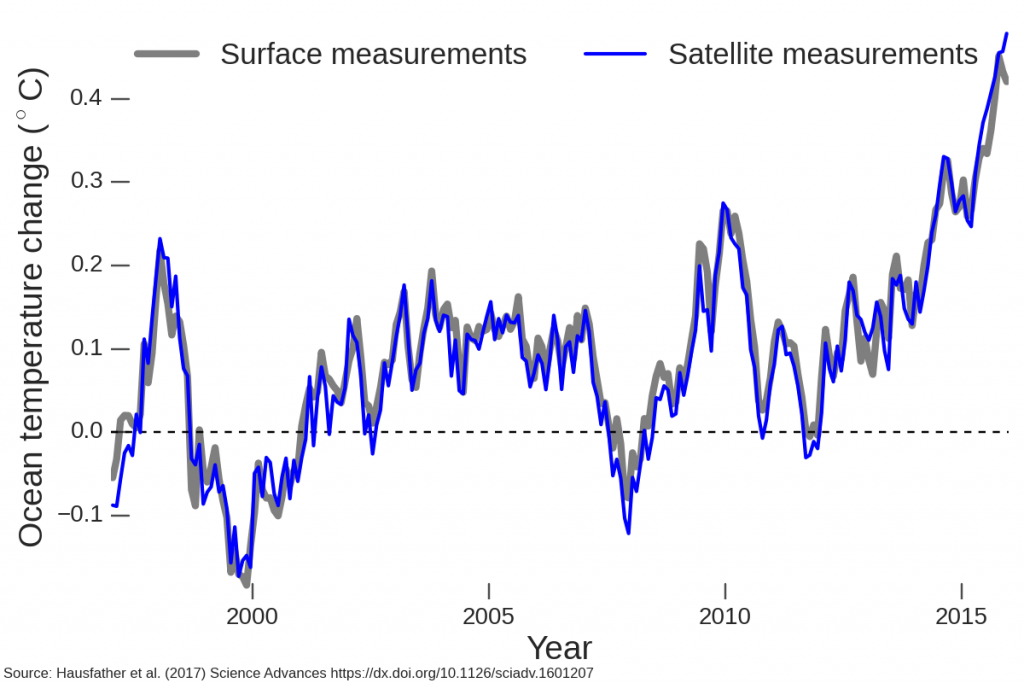
Global warming is measured fact. Working out the culprits has been like Crime Scene Investigation: Physics Edition.
Some evidence comes from a facility in Billings, Oklahoma. Parts of air like water vapour and carbon dioxide naturally glow with infrared heat at very specific frequencies. The Billings site has a device that measured an incredibly precise “fingerprint” of the sky’s heating.
Investigators reported in 2015[3] that they found fingerprints across the sky with a clear match on the heating trigger. Below the blue line is the file fingerprint for carbon dioxide (CO2) heating, which we release into the air when we do things like burn coal & oil. This file fingerprint comes from basic physics backed by precise lab readings.
The red line is the measured fingerprint in the sky over Billings and is a rock solid match. Each spike is extra heat coming down from the extra CO2 molecules that is heating us up. Measurements in Alaska and from satellites[4] confirm this.
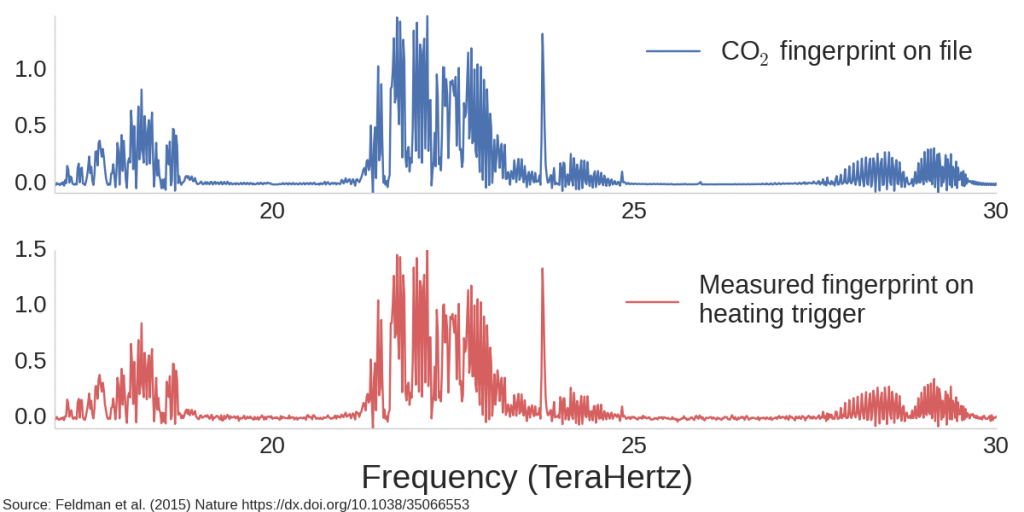
This is just one slide in the huge folder of empirical evidence showing human activity to be the main cause of recent warming.
- 1 – Arrhenius (1896) On the Influence of Carbonic Acid in the Air upon the Temperature of the Ground, Philosophical Magazine and Journal of Science
- 2 – Hausfather et al (2017) Assessing recent warming using instrumentally homogeneous sea surface temperature records, Science Advances
- 3 – Feldman et al (2015) Observational determination of surface radiative forcing by CO2 from 2000 to 2010, Nature
- 4 – Harries et al (2001) Increases in greenhouse forcing inferred from the outgoing longwave radiation spectra of the Earth in 1970 and 1997, Nature


